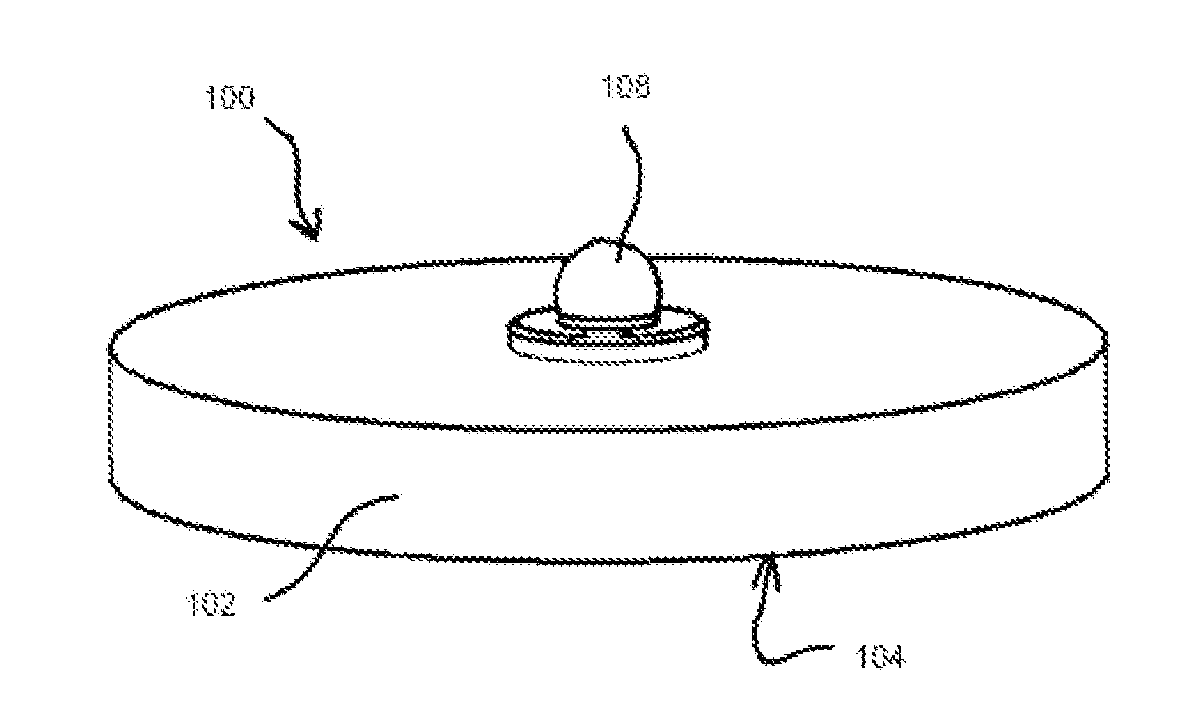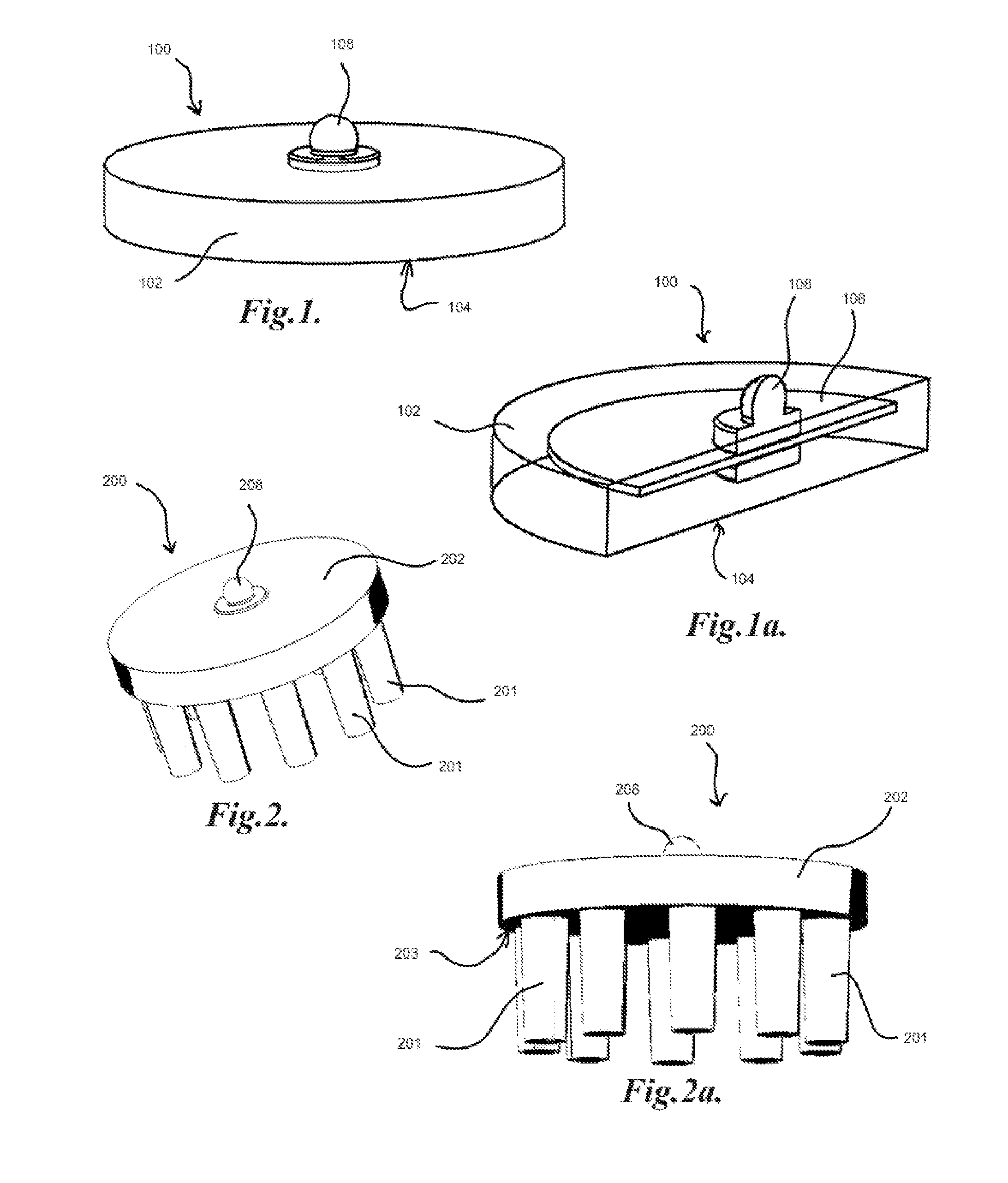Bio-potential sensing materials as dry electrodes and devices
a biopotential and material technology, applied in the field of biopotential sensing materials as dry electrodes and devices, can solve the problems of skin irritation in persons with sensitive skin, added inconvenience to users, user discomfort, etc., and achieve the effect of reducing the electrical resistance, and reducing the contact resistan
- Summary
- Abstract
- Description
- Claims
- Application Information
AI Technical Summary
Benefits of technology
Problems solved by technology
Method used
Image
Examples
example 1
[0052]An example of a conductive thermoplastic elastomer compound based on thermoplastic polyetheramide block copolymer with carbon additives may be utilized. The compound may be injection molded without modifications using normal processing conditions as would be used with thermoplastic polyetheramide block copolymer, and can be easily overmolded or coextruded onto PA-6, PA-66, PC, PVC. The material may generally exhibit volume resistivity<70 ohm-cm and a hardness modulus of between 1.0 MPa to 7.0 MPa. The carbon additives may include: 1) carbon black or graphite—weight concentration 0.5-10%; 2) Multiwall carbon nanotube (MWCNT)—weight concentration 0-3%; 3) Single-wall carbon nanotube (SWCNT)—weight concentration 0-3%; and / or 4) Double wall carbon nanotube (DWCNT)—weight concentration 0-3%.
example 2
[0053]An example of a highly conductive thermoplastic compound based on a low density polyethylene copolymer may be utilized. Conductivity is achieved by using a conductive form of carbon black. In addition to a low electrical resistivity, it has excellent mechanical properties and is easy to extrude or injection mold. The material may generally exhibit volume resistivity<3 ohm-cm, a hardness modulus between: 1.0 MPa and 7.0 MPa
example 3
[0054]An example of a highly conductive thermoplastic compound based on a styrene-ethylene-butadiene-styrene TPE or (thermoplastic elastomer) SEBS filled conductive fillers with a conductive form of carbon black may be utilized. The compound can be injection molded or extruded without modifications using normal processing conditions as would be used with TPE, and may generally exhibit volume resistivity<1 ohm-cm, and a hardness modulus between: 1.0 MPa and 7.0 MPa
PUM
 Login to View More
Login to View More Abstract
Description
Claims
Application Information
 Login to View More
Login to View More - R&D
- Intellectual Property
- Life Sciences
- Materials
- Tech Scout
- Unparalleled Data Quality
- Higher Quality Content
- 60% Fewer Hallucinations
Browse by: Latest US Patents, China's latest patents, Technical Efficacy Thesaurus, Application Domain, Technology Topic, Popular Technical Reports.
© 2025 PatSnap. All rights reserved.Legal|Privacy policy|Modern Slavery Act Transparency Statement|Sitemap|About US| Contact US: help@patsnap.com


